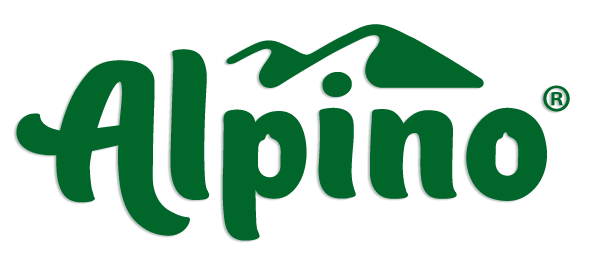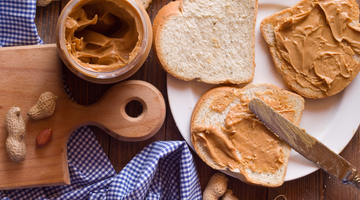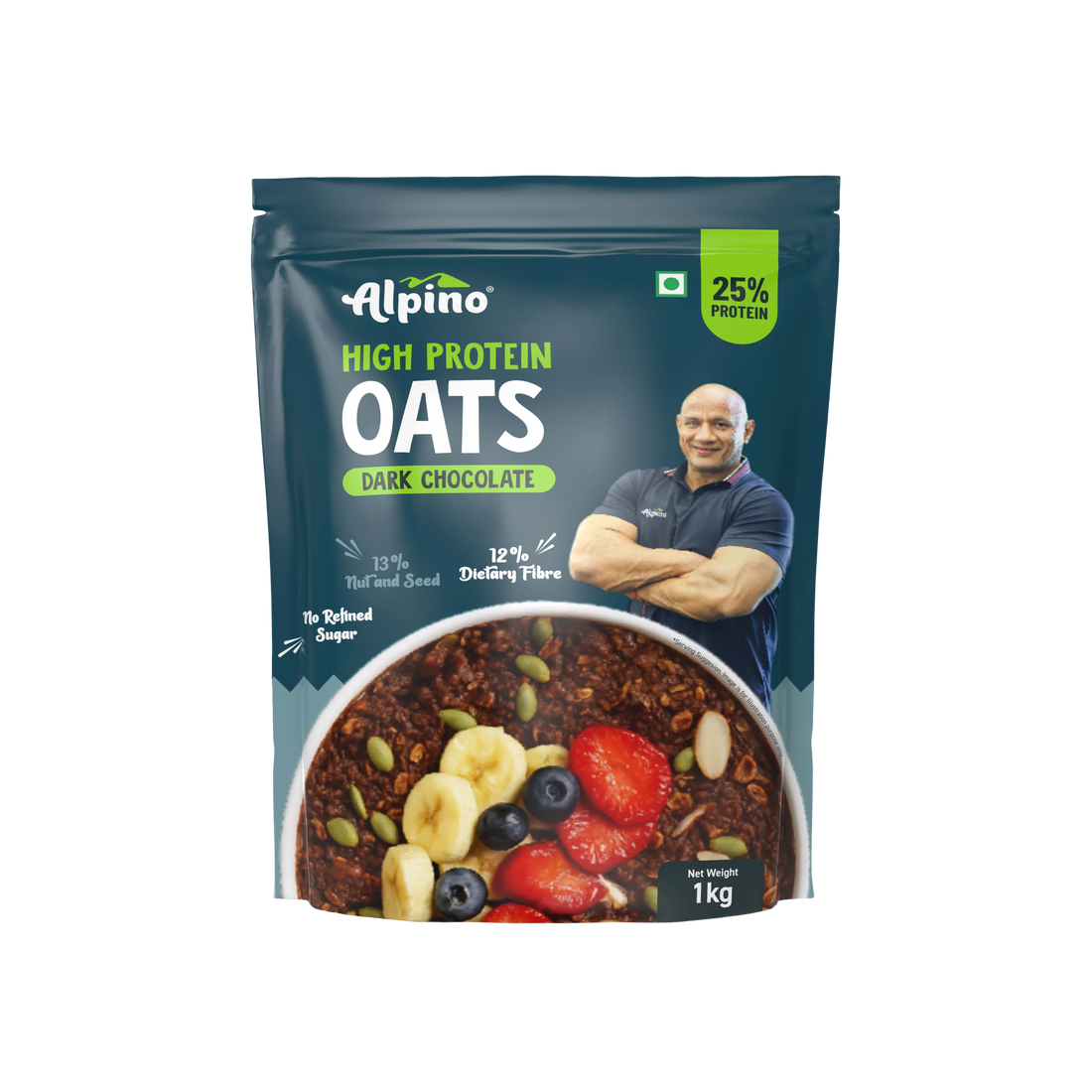Peanut butter may be the oldest nut butter, but it's still one of the most popular and versatile spreads. From classic sandwiches to creative snacks for all ages, get ready to jump on the peanut butter bandwagon! Whether a connoisseur of gourmet snacks or a novice foodie, this guide will show you just how delicious and exciting peanut butter can be.
An Introduction To Eating Peanut Butter
Peanut butter has been embraced as a beloved pantry staple for generations, but enjoying it doesn't have to mean simply scooping it out of the jar with a spoon. With the right ingredients and a bit of culinary creativity, learning how to eat peanut butter can elevate this snack-time treat into a delicacy.
For starters, understanding what type of peanut butter you're working with is key. Traditional jarred peanut butter is generally divided into two categories – creamy or crunchy. Creamy PB is made from ground peanuts and usually only contains one other ingredient, oil, while crunchy PB adds chopped nuts for texture and depth of flavour. Both varieties offer a nutritious snack or meal addition and play nicely with flavours like banana, honey or maple syrup for sweetness; apples for flicks of tartness; and cocoa powder or cocoa powder nibs for richness.
Up your classic PB&J sandwich game with nut butters like almond or hazelnut instead of jelling back on the traditional version. Peanut Butter also works wonders when spread on top warm pancakes as an alternative to syrup, tucked into Dutch baby recipes that use gingerbread spices like nutmeg and clove, spread thin onto crepes filled with slices of strawberry or banana, whipped up in oat-filled energy bites loaded with chocolate chips and oats that keep you fueled throughout the day. Or add dollops to savoury dishes like tacos filled with cilantro slaw and black beans dressed in lime juice that will wow guests at your next dinner gathering.
The range of ways you can enhance your recipes by adding different types of peanut butters, such as chunky natural unsalted Alpino peanut butter, is all yours in this varied world. You can savour delicious flavours without compromising health when eating Peanut Butter becomes an art form!
Can I eat peanut butter directly?
The short answer is yes, you can eat peanut butter directly. However, it is important to remember that consuming too much peanut butter can make you sick and should be done in moderation.
When it comes to eating peanut butter directly from the jar or spoon, there are some steps one should take to ensure safety and health are taken into consideration. First, always choose a natural or organic variety such as Alpino Peanut Butter, as these have fewer unhealthy additives such as hydrogenated oils and sugars added for preservation purposes or taste enhancers like extra salt added for flavour enhancement. You should also look for unsweetened varieties, so no additional sugars or unhealthy sweeteners have been included. Finally, it is best practice to choose nut butters with a high amount of fats (primarily monounsaturated) compared to sugars present in them since this ensures the most efficient utilization by your body while still keeping things balanced when combined with other nutrient-dense foods throughout each day's meal plan.

What is the best thing to eat with peanut butter?
Peanut butter is an incredibly versatile ingredient used to make snacks, sauces, and baked goods. But when it comes to its best flavour combinations, the choices seem nearly endless.
Whether you're a peanut butter purist who considers it a sacred food or a more adventurous spirit willing to explore every aspect of its flavour profile, here are several delicious recipes that satisfy almost any craving.
If you're looking for simple and classic ways to enjoy your favourite nutty spread, try adding fresh fruit slices like banana or apple wedges. This classic combination adds a slightly sweet flavour and crunchy texture, making for an easy snack or tasty sandwich filler.
Aromatic spices such as ground cinnamon or pumpkin pie spice mixed in with the peanut butter create a cosy fall treat that's both sweet and savoury at the same time. Another flavorful addition to pair with peanut butter is honey; this simple yet delicious combination can be found in multiple regional variations worldwide, such as Filipino-style peanut butter toast with honey or Mexican-style oatmeal with peanuts, honey and cocoa powder.
Gourmet twists on this beloved food include combining it with other enticing ingredients such as chocolate chips, granola, pretzels and even bacon strips! For something light yet still satisfying, try a wrap filled with softened cream cheese mixed with peanut butter, diced apple chunks, and walnuts - unbelievably yummy!
When all else fails, choose your favourite jam or jelly - either store-bought or homemade - and make yourself a fantastic PB&J sandwich; it's always almost sure to please! So no matter how picky of an eater you may be, there's bound to be something that pairs perfectly with your favourite creamy delight – so happy eating!
How to eat peanut butter without bread
Peanut butter is great for snacking and lunching, but don't limit yourself to slathering it on bread. If you're looking for new ideas for how to eat peanut butter without bread, here are some creative (and delicious!) options.
Perhaps the easiest way to enjoy peanut butter without bread is with fruits and vegetables. Try slicing some apples or celery into sizable pieces, so they are easy to dip into the peanut butter. Raisins and bananas pair nicely with peanut butter — roll freshly sliced banana coins in the spread or mix raisins with creamy or crunchy peanut butter.
If you have a sweet tooth, create a tasty treat by blending some natural creamy or crunchy peanut butter with yoghurt, honey, and cinnamon and freezing it as an ice cream-like treat. You can dip frozen banana slices into melted chocolate before rolling them in melted peanut butter for a sweet snack.
If you want something salty, combine natural creamy or crunchy peanut butter with carrots, cucumbers and bell peppers to make an epic veggie platter dip. Peanut sauce can be used during stir-frying vegetables, making them super flavorful — whisk together unsweetened coconut milk, lime juice, soy sauce and peeled garlic cloves before stirring in your favourite natural organic peanut butter at the end of cooking time!
How to eat peanut butter with bread
Bread and peanut butter is a timeless classic, but there's more to this snack than meets the eye. If you're looking to spice things up and take them to the next level, here are some tips and tricks for making your peanut butter-bread masterpiece.
First of all, choose your bread wisely! A good quality slice or two of fresh or toasted whole wheat or rye is an ideal canvas for peanut butter. However, any sandwich-ready bread will work -- just be sure it has a hearty texture so it stands up to the creamy spread.
Peanut butter comes in wide varieties -- from crunchy and salted to smooth and slow-roasted -- so choose whichever fits your fancy! A classic combo is creamy salted peanut butter on whole wheat toast but feel free to experiment with different nut butters, including almond, cashew or sunflower seed options. Once you've selected, toast the slices if desired before applying a generous layer of natural peanut butter.

Next, add some toppings for even more flavour: sliced bananas? Dried cranberries? Honey? Or a sprinkle of cinnamon – all great options for boosting taste and texture! Lastly, combine both slices when you eat: cut the sandwich into halves or quarters; fold one slice in half over the other; roll one slice around another; OR combine both slices at once--whatever works best for you! And there you have it: a delicious cheesy treat using simple ingredients that can easily be tailored to any personal preference!
How to eat peanut butter with milk
If you're looking for a way to get more nutrition from your peanut butter, why not consider drinking it with milk? Peanut butter and milk are interesting combinations that yield a pleasantly nutty flavour. Plus, you get all of the protein and vitamins from the milk, healthy fats from peanut butter, and other nutrients like magnesium, phosphorus, folate, and vitamin B6.
To make a peanut butter milkshake, you'll need some smooth or crunchy organic peanut butter and non-dairy milk such as almond or oat. You can also use regular dairy milk if that's what's available. If using non-dairy milk, add some maple syrup to sweeten it or add a little bit of regular sugar - this will depend on your preference.
Pour the desired amount of your choice of non-dairy or dairy milk into a blender and spoon in three tablespoons of your favourite peanut butter – smooth if you prefer creaminess or crunchy if you like texture. Once all ingredients have been added to the blender, blend for about two minutes on high until everything is thoroughly combined and enjoy!
You can also try making a bowl of PB&M – peanut butter and banana oatmeal – which is oatmeal made with mashed banana and peanut butter stirred in before cooking. You can sweeten the mix with brown sugar or honey as desired. If desired, you could even sprinkle on some sliced bananas as garnish - how delicious! This is an excellent way to start your day while still getting plenty of nutrition from the nuttiness of the peanut butter combined with sweetness from honey or brown sugar.
What is the healthiest way to eat peanut butter?
The healthiest way to eat peanut butter depends on your dietary needs and personal taste preferences. Generally speaking, most nutritionists recommend buying unsweetened peanut butter without added sugar or oil, like Alpino Peanut Butter, especially if you are watching your calories or trying to lose weight.
Who should avoid peanut butter?
Despite its widespread popularity, some people should avoid eating peanut butter. Those allergic to peanuts or other tree nuts should avoid consuming any products containing peanuts. But even those with no known allergies should be aware that ingesting too much peanut butter can have side effects for some people.

In addition, people suffering from gallbladder problems might find that their digestive system cannot handle fatty or high-sugar foods like regular peanut butter very well. If you've been diagnosed with gallstones or another gallbladder issue, you may opt for "lite" versions of the spread made with reduced fat and sugar content, such as those made with honey instead of refined sugar as a sweetener.
Conclusion
In conclusion, peanut butter is a fantastic snack food and can be enjoyed in various ways. From using it as an ingredient in other dishes to enjoying it, there are many delicious ways to eat peanut butter. So whether you're vegan, gluten-free or just looking for something new and exciting to add to your diet, remember the versatile power of peanut butter. Eating a spoonful straight from the jar can be satisfying and enjoyable - but remember that it is a high-fat snack so take care not to overindulge! With so many exciting and tasty recipes, there's no excuse not to try peanut butter.
FAQs
What are the health benefits of eating peanut butter?
Peanut butter is an excellent source of an array of vitamins, minerals and healthy fats. It also contains protein, making it a great addition to vegetarian or vegan meals. Peanut butter may also help reduce the risk of cardiovascular disease and type 2 diabetes.
How do I cook with peanut butter?
Peanut butter can be used in many different recipes, from sweet treats like cookies or banana bread to savoury dishes like satay sauces for chicken or curry dishes. A few household staples such as honey, nuts and apples can be enhanced by adding peanut butter variations like almond or cashew nut butters!
How should I store my jar of peanut butter?
The best way to ensure your peanut butter stays fresh is to keep it tightly sealed in an airtight container at room temperature, away from direct sunlight. If stored properly, it should last up to six months in the pantry before being consumed. Additionally, if stored in the refrigerator, peanut butter can last up to 12 months!


















